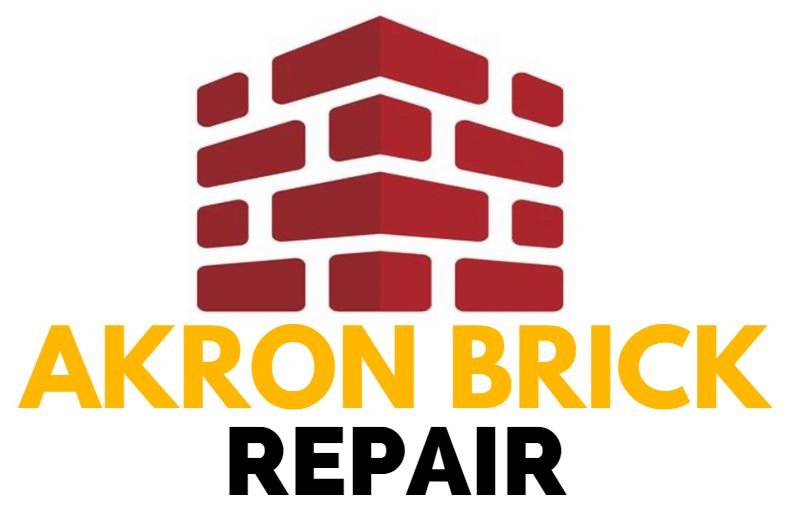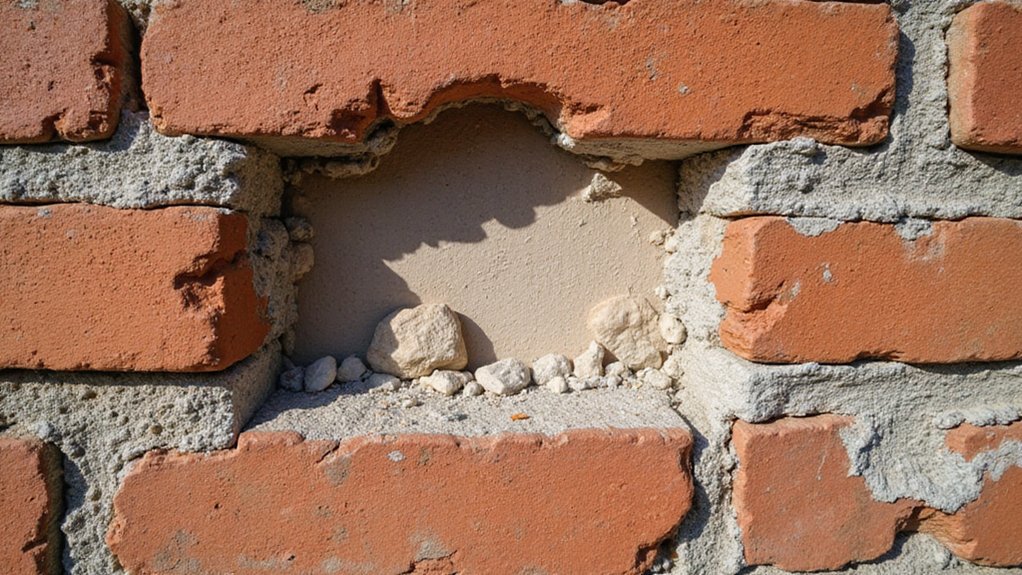If you own an old brick home, you’re probably aware that maintaining its charm isn’t just about aesthetics—it’s about structural survival. Tuckpointing isn’t merely a cosmetic fix; it’s your home’s first line of defense against deterioration. Crumbling mortar isn’t just unsightly—it’s a silent threat that can compromise your entire house’s integrity. Wondering how to safeguard your historic investment and prevent costly structural damage? Let’s investigate why tuckpointing might be the most important maintenance task you’ll ever undertake.
The Science Behind Mortar Deterioration
Because mortar is the unsung hero of brick structures, understanding its gradual breakdown is essential for homeowners. Environmental factors like temperature fluctuations, moisture, and chemical reactions slowly erode mortar’s integrity.
Structural stress from building settling, ground movement, and weather impacts accelerates this deterioration. Water seepage, freeze-thaw cycles, and exposure to pollutants create microscopic cracks that widen over time. Your home’s mortar joints become vulnerable, compromising the entire brick wall’s stability.
Regular inspection and timely tuckpointing can prevent extensive damage, protecting your cherished home’s structural strength and preserving its historical character. Chimney masonry structures are particularly susceptible to rapid deterioration due to constant exposure to harsh weather conditions.
Signs Your Brick Home Needs Tuckpointing
How can you tell if your brick home is silently crying out for tuckpointing? Look for telltale signs of deteriorating mortar and crumbling brick joints. Visible cracks between bricks, powdery mortar that easily crumbles when touched, and gaps where mortar has fallen out are clear warning signals.
You’ll want to pay close attention to areas exposed to harsh weather conditions. Moisture penetration can accelerate damage, potentially compromising your home’s structural integrity. If you notice these symptoms, it’s time to evaluate professional tuckpointing to protect your cherished brick home and prevent more extensive, costly repairs. Freeze/thaw cycles in northeast Ohio can rapidly deteriorate mortar joints, making professional tuckpointing a critical maintenance strategy for preserving your brick structure.
Benefits of Professional Tuckpointing Services
Professional tuckpointing can breathe new life into your aging brick home, offering a range of critical benefits that protect your property’s structural integrity and aesthetic appeal.
You’ll uncover several advantages when investing in professional masonry repair techniques:
- Prevents water damage and moisture infiltration
- Augments your home’s aesthetic options
- Increases overall property value and structural durability
Step-by-Step Tuckpointing Process Explained
When brick walls start showing signs of wear, tuckpointing emerges as a precise and strategic repair method that can restore your home’s structural integrity.
You’ll need proper tool selection to begin, including a tuck pointer, masonry chisel, and specialized mortar mix. Carefully remove damaged mortar using precise techniques, ensuring you don’t damage surrounding bricks. Clean the joints thoroughly, then apply new mortar with careful, consistent strokes.
Professional tuckpointers understand how to match mortar color and texture, creating seamless repairs that protect your home’s historic character and prevent further deterioration. Your brick walls will thank you.
Cost Considerations and Long-Term Savings
Tuckpointing might seem like an expensive home maintenance project, but it’s actually an investment that can save you thousands in potential repair costs down the line. By addressing mortar deterioration early, you’ll prevent more extensive damage to your brick structure.
Consider these budget-friendly options:
- DIY minor repairs to reduce professional service costs
- Schedule periodic maintenance to prevent major structural issues
- Compare quotes from multiple tuckpointing professionals
Cost-effective long-term strategies can help you protect your home’s value and structural integrity while managing your maintenance budget wisely. Smart homeowners understand that preventative care is always more affordable than extensive repairs.
Preserving Historical Architectural Integrity
How can you maintain the timeless charm of your historic brick home while ensuring its structural resilience? Tuckpointing plays an essential role in preserving your home’s historical significance and architectural preservation.
By carefully replacing deteriorating mortar with precisely matched color and texture, you’ll protect the original character of your cherished property. Professional tuckpointing helps maintain your home’s authentic appearance while preventing further damage.
It’s an investment that honors your home’s heritage, ensuring that its unique architectural details remain intact for future generations to appreciate and enjoy.
Choosing the Right Tuckpointing Professional for Your Home
Because selecting the right tuckpointing specialist can make or break your historic brick home’s restoration, you’ll want to approach this decision carefully. When screening qualifications and vetting contractor options, consider these critical factors:
- Look for professionals with proven experience in historic masonry restoration
- Check references and verify previous work on similar brick structures
- Request detailed written estimates that include material specifications and project timelines
Your home’s architectural legacy depends on choosing a skilled artisan who understands the delicate subtleties of preserving old brick. By investing time in finding the right expert, you’ll protect your home’s structural integrity and historical charm.
Frequently Asked Questions
Can I Do Tuckpointing Myself or Should I Hire a Professional?
You’ll find tuckpointing challenging without professional skills. While DIY techniques exist, expert techniques guarantee precision and safeguard against costly mistakes that could damage your home’s structural integrity.
How Often Do Brick Homes Typically Need Tuckpointing Maintenance?
You’ll typically need tuckpointing every 25-30 years, depending on mortar composition factors and masonry deterioration patterns. Climate, brick age, and maintenance frequency can influence your home’s specific repair timeline.
Will Tuckpointing Completely Prevent Future Moisture Damage in My Home?
Tuckpointing won’t completely prevent moisture damage. It’ll help manage moisture migration patterns and reduce risks from freeze-thaw cycles, but you’ll still need regular inspections to maintain your home’s structural integrity.
Does Homeowners Insurance Cover the Cost of Tuckpointing Repairs?
Most homeowners’ policies won’t cover tuckpointing as routine maintenance. You’ll want to review your policy coverage carefully, noting specific limitations that might exclude standard masonry repair expenses.
Can Tuckpointing Improve My Home’s Energy Efficiency and Insulation?
You’ll experience improved energy savings and better temperature regulation when tuckpointing seals mortar gaps, reducing drafts and enhancing your home’s insulation performance effectively.

